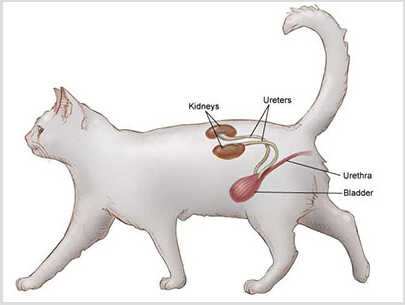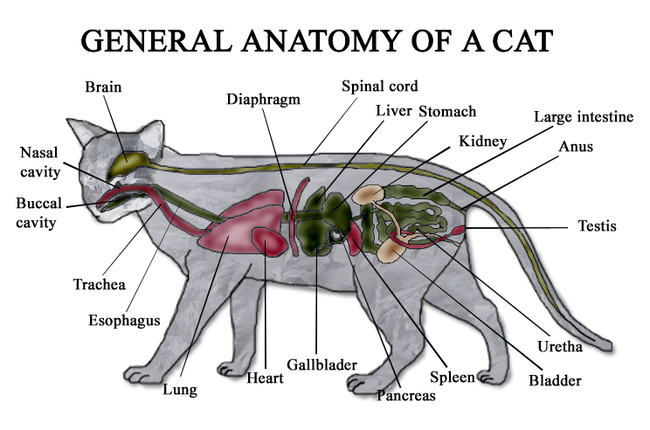Normally, an adult cat pees two to three times per day and poops at least once per day. If we think about the internal health of cats, we often only consider the stomach, kidneys, lungs, the heart, and even the liver however it is very rare to think about the bladder.
Undoubtedly, bladders do play an important role in maintaining good health in humans as well as animals. In this same way, if you have a cat pet, you need to know how often do cats poop and pee.
First of all, most of us already know the basics of our bladder how works, and filtration. Do you want to know, how exactly does this organ ensures a healthy life for your feline? Actually, bladder-related issues can sometimes create severe problems in your cat’s behavior.
How Much Water Do Cats Typically Drink?
If the cat’s weight is 5 pounds, so it needs between 3.5–4.5 ounces of water. This way 10 pounds cats need between 7–9 ounces of water per day. Should be provided fresh water for drinking your cat every day.
How Long Can a Cat hold Their Pee?
Believe it or not, according to the pet specialist, cats are able to go on without peeing somewhere between 24 to 48 hours, even though they have drunk enough liquid and taken their daily meals. Generally, indoor felines have access to their litter box for them to relieve themselves.
Remember, if a cat holds pee for more than 48 to 72 hours, they might be at serious risk of injury or often death as the toxins are building up. So, when you plan on traveling with your cat, then you take them out of their carriage every six hours so that they can empty their bladder.
How Often Should A Cat Go?
Some people want to know the answer to this question, How often do cats poop and pee? It’s an important question and of course, has a not so easy answer.
There are several factors that will influence the answer. These factors include, amongst other things:
- Your cat’s age.
- What and how much you feed them
- How much they exercise.
- Whether they have any underlying medical conditions which might affect their gut motility or health
- Whether or not your cat is on any medications or supplements
Cat Urinary Blockage
Usually, the blockage happens from crystalline-like minerals or thick mucus. Moreover, it can happen from feline lower urinary tract disease called FLUTD, urethritis, or cystitis. All of these three conditions have one same symptom, that is they would stop urinating.

But, in the case of FLUTD, the signs are more extreme. Consider if your feline may cry out while urinating, pass blood, skip the litter box, or constantly moisten their genital area. Remember, when your cat suffering from FLUTD and doesn’t get immediate vet attention, he or she might go into a coma, and that could result in death.
How Can You Help Cat Relieve Their Bladder
In fact, there is one unique technique that is very popular among cats, and it’s called the Ragdoll technique. In cases, if the cat needs to empty their bladder, owners can use this method to help their kitties.
Undoubtedly, this technique is comparatively simple. Firstly, hold your kitty by his armpit in a way so that his legs hangover to the litter box. Even you can even take your cat outdoors, but a litter box is naturally a better option. However, if your kitty doesn’t cooperate, firstly, calm him down, Rub his back, pet him, and then try again.

On the other hand, if that doesn’t help, you will need to find his bladder. Obviously, you need to do that.
Fortunately, when you find your cat’s bladder, use your fingers to gently squeeze it and press it downwards. So, this might help your cat in relieving himself.
Finally, this is what the Ragdoll technique is all about, easy to perform. Though it takes a little patience to get a hold of it, the method is tried and tested.
How Often do Cats Poop and Pee in 24 Hours?
Honestly, there is no particular frequency between the hours when your cat should empty their bladder and how often do cats poop and pee in 24 hours. Usually, most cats go to the toilet every 8 to 12 hours. That means two to three times a day.
But if they don’t go to the bathroom within this time range, they might be suffering from a health issue or infection. On the contrary, it could also be because of some blockage that is preventing them from urinating frequently.
Actually, if you want to keep track of your cat’s urine routine, simply check their litter box. Remember, too little or too much urine could be indicating health problems. On average, generally, your cat is supposed to produce 3 fist-sized globs of litter in their box every day.
What Do You Do If Your Cat Stops Using The Litter Box
Train your cat how to use litter box. Here is how you can help your lovely cat urinating inside their litter box.
- Firstly, Place the box in their preferred area
- Use a litter box that is large enough to fit your cat
- Place the litter box in low heightened spaces so that your cat can have better access to it
- Clean the litter box regularly using baking soda
- Think about emptying their litter box at least once a day
How to Treat Urinary Problems in Cats
Keep in mind, cats often get stressful and because of this, urinating is not an abnormal behavior either. So, if you suspect that your pet cat has been stress urinating, then you have to find out the root cause of this stress. Then consult your vet and talk about the environmental triggers that may be bothering your cat.
If it’s been the cause of a bacterial infection, your vet will need to perform a bacterial culture on your cat’s urine to rule it out. Though it’s quite rare for cats to have such infections, unfortunate cases do happen.
Additionally, another problem is a urethral obstruction or bladder stones that may block their bladder. For this reason, you need to change their diet. Feed your cat that is the best food for cat urinary tract issues. But obviously after consulting your vet.
Final Thoughts
Finally, we would say that cats can go long hours of time without urinating or drinking water. Usually, they can even hold their urine for up to forty-eight hours. Moreover, anything beyond that should be taken seriously.
Additionally, make use of the techniques mentioned above. Otherwise, you even ask your vet for possible solutions and techniques. But, if you are not sure about your feline’s sickness, it’s better to get an expert’s advice.
Overall, more important to keep in mind is that your cat should relieve themselves at least four times a day. Set up a routine and prepare your cat by proper training accordingly from a very young age. Remember, training is the key.
Please share this post and help a friend, who might be facing any similar problem with their cat and by this activity be kind to your cat as they are a part of your family too.
Dr. John Morris, DVM is a Doctor of Veterinary Medicine who has seven years of experience in feline medicine, dermatology, and behavior. He also enjoys volunteering at a local NGO that supports literacy programs for children and adults. In his free time, he enjoys fostering kittens, traveling, vegan cooking, hiking, and biking. Learn more about Justin here.


